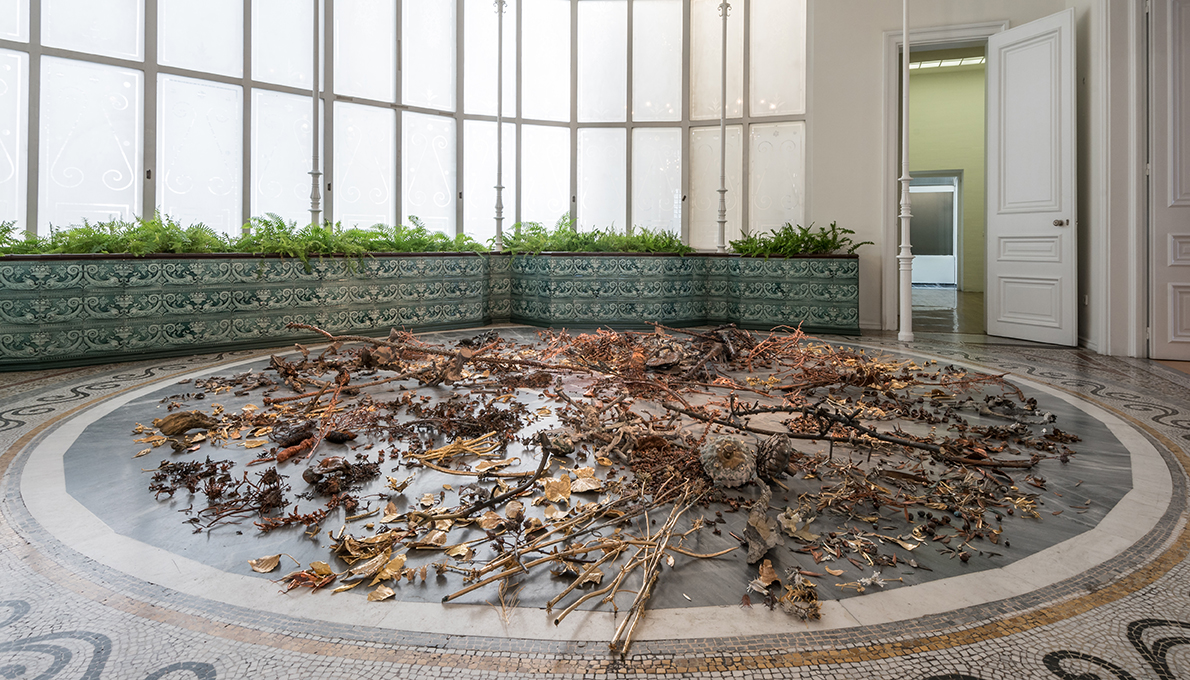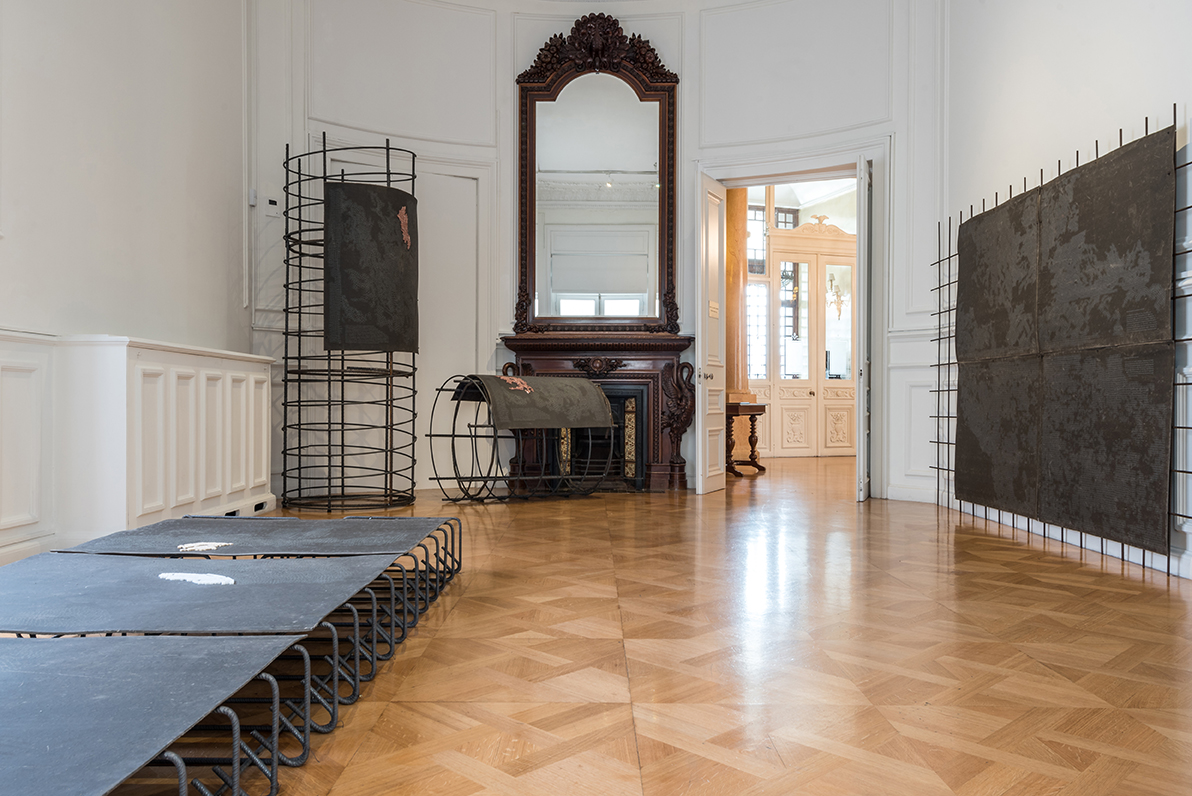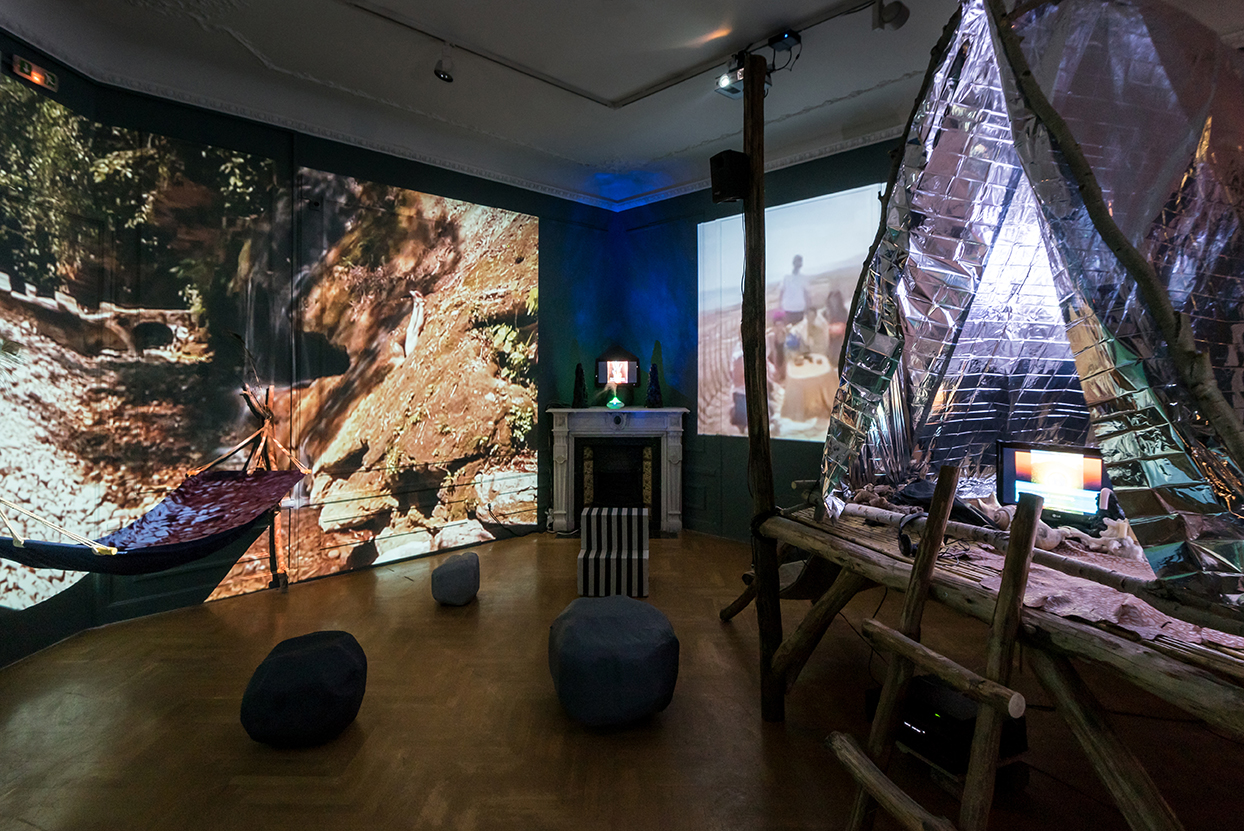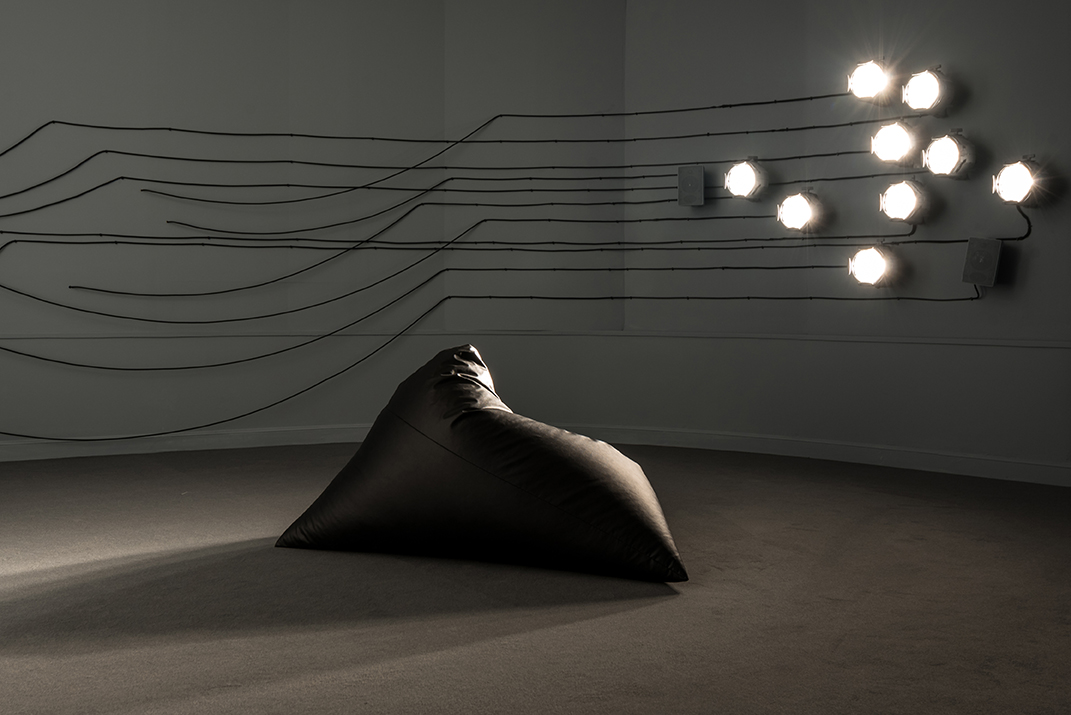Deste Prize: Museum of Cycladic Art, Athens
by Kostas Prapoglou
The DESTE prize exhibition, organized by DESTE Foundation for Contemporary Art in Athens, is known as the biannual event promoting young and emerging Greek and Cypriot artists—the six artists shortlisted by a Selection Committee showcase their body of work at the Museum of Cycladic Art for four months. The prize of 10,000 Euros will be awarded to one of the participants by an international jury (among them the president of DESTE Foundation, Dakis Joannou) towards the end of the exhibition. The criteria for the prize winner focus on the artists’ entire oeuvre and the overall development of their visual vocabulary, not just the current artworks on view.
Spanning the venue’s two floors, the exhibition is divided into separate sections for each artist. A large rectangular room on the ground floor has been allocated to Yiannis Papadopoulos, whose installation, Exhaustion (2015), questions the homonymous method in Mathematics of calculating areas and surfaces. Without delving into the actual crux of the geometry or integral calculus involved in what the work title suggests, the artist seeks a more poetic outlook in his proposal which concentrates on the inter-relation of his chosen objects with the viewer and the given spatial conditions. Papadopoulos’ work is an endeavor to activate the viewer through the introduction of trivial apparatus such as the mechanism of a wall clock, sheets of green pages stuck on certain walls and a miscellany of printed text, which seemingly dissolve in the enormousness of the hosting locus.

The impressive rotunda room is occupied by the work of Socratis Socratous, Stolen Goods (2009–2015). A carpet of plant organs and parts comprising leaves, seed pods, branches, and moss synthesize a habitat of decay and displaced beauty. Some left in the original state of their material and others cast in bronze, copper, silver and gold playfully distract the viewer’s perception of reality embracing the inability of consciousness to discern reality from its simulation. Seamlessly blending actual reality with hyperreality through the appropriation of phytomorphology, Socratous underlines notions of socio-cultural re-moulding, urbanization, industrial impairment and political disparities.

The installation of Petros Moris (Copies, Columns, Reconfiguration, 2012) at an adjacent room, is a collection of black sheets of elastic insulation supported by metallic concrete reinforcement structures, distributed horizontally and vertically around the space. Printed mosaic designs from ancient Greek urban and rural buildings appear on the black surfaces. The artist disengages the bona fide decorative representations of tesserae by isolating small segments of ‘surviving’ mosaic and divulging the imprints of ‘non-surviving’ counterparts. Mapping the remnants of the past on pure industrial mediums, embrace a technologically advanced modus operandi in combination with carefully selected text that occasionally emerges next to the tessellated patterns. This process fabricates an ongoing intercultural discourse, an exchange of emotions, a state of flux encapsulated within these snapshots—or even x-rays—of civilization.

Upon entering the first floor, viewers are hit with the work of Eternal Internet Brother/Sisterhood (1-3) by Angelo Plessas. Fruits of an ongoing project that started in 2012, the artist displays on three video installations his holiday interludes with his internet friends, all having been invited to join him. Shot in two different locations (Anafi, Greece and Xilitla, Mexico), the videos are chronicles of the two gatherings, imbued with the 1960s hippie culture and probably referencing countercultural values and the avant-garde, the communal spirit and even jipitecas, a group that formed La Onda, a cultural movement in Mexico. Digitally processed geometric forms occasionally distract the landscape on video; I suspect their motion reminisces the Sacred Geometry meditation practices and the Yantra system. A hammock, a tent, smaller screens scattered around the room and a vexatious intermittent bell sound do not really add anything to the noetic construction of Plessas’ attempted narrative.

Maria Hassabi’s installation (Wall, 2015), consists of 9 ETC Source Four Par and their black power cables mounted on a wall opposite a bean bag. The viewer is free to act instinctively or take a leaflet disclosing instructions, which, in a choreographic manner, introduce a divergent situation of understanding and a conscious registering of space and time. The corporeal awareness and consciousness through the immense enforcement and impact of variable light levels, orchestrate an abstract behavioral performance of the human corpus.

The final work on show is the multi-faceted installation of Natalie Yiaxi, occupying two smaller rooms. A conglomeration of objects (among them Untitled 2015, an installation of 48 blank nevertheless titled books) and three video installations shown on mini ipads, manifest the reconnection of the self to the quotidian of the 21st century as opposed to older 20th century practices and applications. The viewer finds themselves wandering around an open cabinet of everyday curiosities, the small scale of the objects on display prompting us to scrutinize every single of them. The concurrent playing of six tracks (totaling around 10 minutes) of a sound installation accompanied by notes and lexigrams (Posh Taro, 2015) reacquaint us with our own trajectories and personal identities. Yiaxi’s body of work is an in-depth and stimulating investigation of the subjectivity of our own hypostasis through the cartography of time and the acrobatic mediation of the given space.

The DESTE prize exhibition and award are gradually becoming a vital part of the Greek contemporary art scene. Although most of the nominees are already established mid-career artists with gallery representations, a wider spectrum of aspirational young and fresh artists still needs to be attracted and get involved. DESTE Foundation is a prominent art institution in a small country such as Greece and it could undeniably play a pivotal role in supporting and promoting young talent. Simultaneously, the formation of a parallel ‘out of competition’ event with established artists could perform as a paradigm and a curatorial landmark worth visiting every [other] year.
DESTE Prize exhibition at the Museum of Cycladic Art in Athens runs through September 30, 2015.